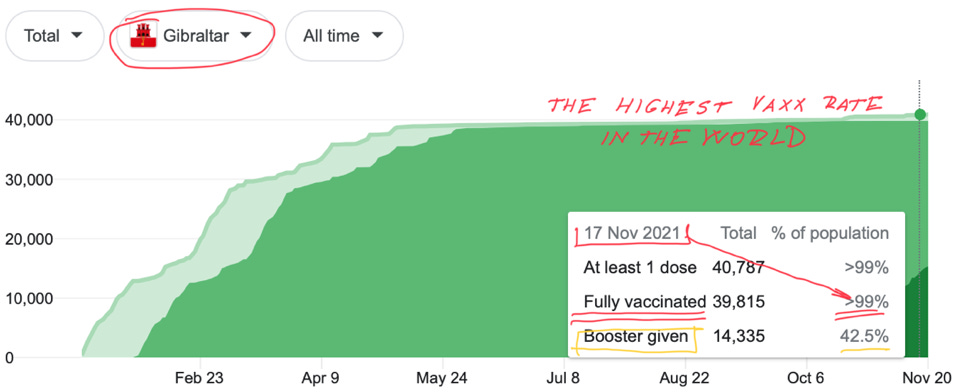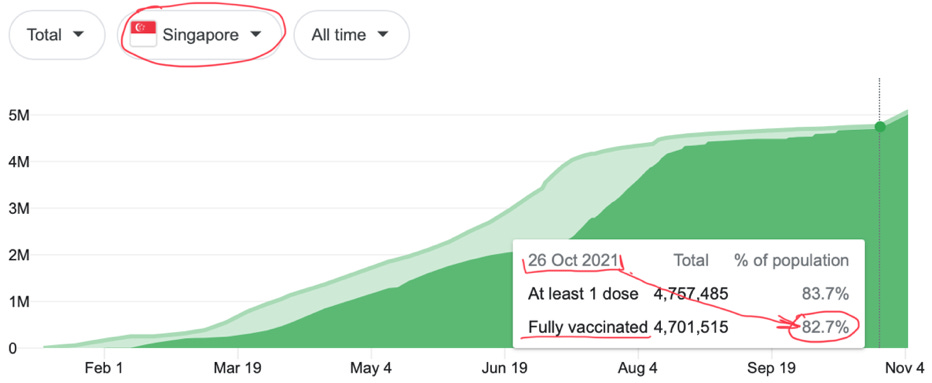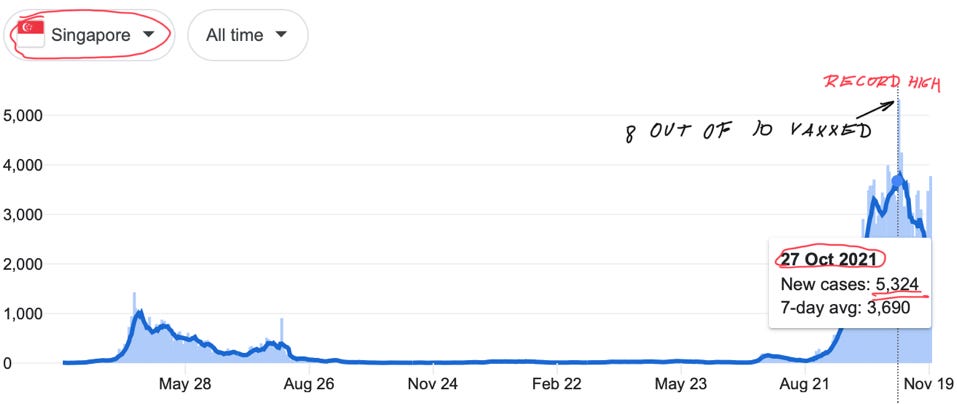Hard Data Shows the Covid Vaccines Don’t Work
The last several months have seen a heated debate about the effectiveness of the vaccines that are being currently administered against Covid-19.
The question on many people’s minds is: Do these pharmaceuticals work?
Both sides tend to feel quite strongly about their position which gives rise to a great deal of emotion as the debate goes on.
The good news is that being nearly a year into the vast vaccination enterprise we now possess sufficient data to determine whether the shots are effective or not.
As we know, the objective of vaccination is to eliminate or significantly reduce the incidence of the targeted disease. If a vaccine works, then in a highly vaccinated population we will see either complete elimination of the disease or a significant decrease of its incidence.
Since it is usually not practicable to achieve 100 percent inoculation rate, the question is what is the vaccination level that will either bring the disease under control or eliminate it altogether.
This level is sometimes referred to as “herd immunity.” We have been told repeatedly by experts, most notably Dr. Anthony Fauci, that the vaccination rate of 60 to 70 percent would confer herd immunity in regard to Covid 19.
Fauci’s position was roughly in line with our experience with many other diseases where such levels of inoculation have either eliminated them or made them endemic, i.e., sufficiently limited so that they do not pose a large-scale, epidemic-level threat to the community.
Some twelve months into the worldwide vaccination drive there are now a number of countries with vaccination rates of between 60 and 70 percent. There are also some countries and geographical areas with rates of 80 percent or above.
While we do not know the precise figure which would confer herd immunity against this disease, we can be sure of one thing: if the vaccines are effective, vaccination rates of more than sixty percent should result in a significant reduction in its incidence.
[NOTE: The effect of the vaccines is further augmented by natural immunity which, according to some experts, may run as high as 50% in some populations. Nearly two years into the pandemic, populations in many places have been extensively exposed to the virus and as a result possess natural antibodies. Therefore, inoculating, let’s say, 65 percent of the population with a good vaccine should result in overall immunity in excess of 80 percent. With this kind of immunity levels we should expect, if not elimination of the disease, then certainly a considerable decline in its occurrence.]
This, however, is not at all what has happened in most of the highly vaccinated countries and regions. What has transpired in many of them was the very opposite. Following the “success” of their vaccination drives, there occurred dramatic surges of Covid 19. Even more astonishingly, several of these countries posted a record number of cases just after achieving their very high vaccination figures.
This news may come as a shock to many people because the connection between high uptakes and subsequent explosion of cases has been virtually ignored by the mainstream media.
We will show you the reality of the situation by presenting the relevant data in an easy-to-see, straightforward way. We do this by juxtaposing graphs that depict vaccination rates with graphs that show case rates in countries with high vaccine uptakes.
Neither side in the debate would dispute the validity of the data presented below. The data is taken from the Google Coronavirus Statistics tool which draws its material from official sources and government databases. The data is publicly available and widely accessible. If you wish to verify or reproduce the data used in this piece, you can do so easily by going to google.com and typing “coronavirus” plus the name of the country whose statistics you want to examine. Once the country’s data comes up, you can choose in the horizontal menu that runs right under the term “Statistics” what graph you want to see: “New Cases” or “Vaccinations.”
Gibraltar
On November 17, Gibraltar posted its highest number of new cases in more than 10 months. The surge became a cause of great concern and prompted the government to call off Christmas festivities. The last time Gibraltar had so many cases was at the height of the winter wave in mid-January of 2021.
(Gibraltar data via Google.com link)
The most startling aspect of the current surge is that Gibraltar is the most highly vaccinated region in the world with more than 99 percent of its population being fully vaccinated. Even more astonishingly, more than 40 percent of Gibraltarians have already received their booster.
Given what we have been told about the vaccines by the corporate media and government officials, you would be justified in thinking that this is some kind of misinformation or error. It is, however, an undeniable fact that here, in the very midst of Gibraltar’s current surge, 99 percent of its residents are fully vaxxed. This is something you can see for yourself in the chart below.
The example of Gibraltar should stand as a clear lesson and a dire warning to health officials and politicians around the world who are trying to force their populations into high vaccination uptakes. Gibraltar clearly shows that even a 99 percent vaccine rate followed by intense boostering will not tame or eliminate Covid 19 from the population. Quite to the contrary, it can coincide with near-record spikes that will likely surpass previous highs, especially as in the weeks ahead the country enters the winter period.
Singapore
By October 26 nearly 83 percent of the Singapore population received their course of Covid injections. This means that more than 8 out of 10 Singaporeans had achieved fully vaccinated status.
(Singapore data via Google.com link)
Singapore’s very high vaccination rate, however, did nothing to decrease the presence of the disease in the nation. The exact opposite, in fact, happened. On October 27, 2021, Singapore posted its record case count of 5,324 new cases.
This figure was nearly 300 percent higher than the previous record of 1,426 that occurred on April 20, 2021. At that time Singapore’s vaccination rate was only 15 percent.
If the vaccine was even remotely effective such a situation could have never arisen. There is simply no way that a country where 83 percent of population received an effective vaccine could ever experience such a record-breaking surge. Rather than an explosion of Covid, Singapore’s very high vaccination rate should have brought about herd immunity.
Denmark
As of November 12 Denmark’s vaccination stood at more than 75 percent.
(Denmark data via Google.com link)
On the same day, Denmark recorded 4,585 new cases of Covid 19, which was the country’s new case record. Denmark’s previous record was 4,508 cases posted in December of 2020 at the height of last year’s winter wave.
At the time of the old case record, the vaccination rate in Denmark was 0 percent.
The country’s very high vaccination rate not only did not eliminate the disease, but it coincided with record-breaking case numbers. If the vaccines injected into the bodies of two-thirds of Danes were any effective such a situation could have never come about.
Ireland
On November 16 of this year, Ireland boasted a vaccination rate of more than 75 percent.
(Ireland data via Google.com link)
On that day, Ireland posted 8,965 new cases of Covid-19. This was a new high for the nation.
The previous high was recorded on January 8, 2021. The figure stood at 8,227 then. At the time, Ireland’s vaccination rate was 0 percent.
Vaccinating 4.5 million people in Ireland – more than two-thirds of the population – was accompanied by an explosion of cases and a new case high for the nation.















